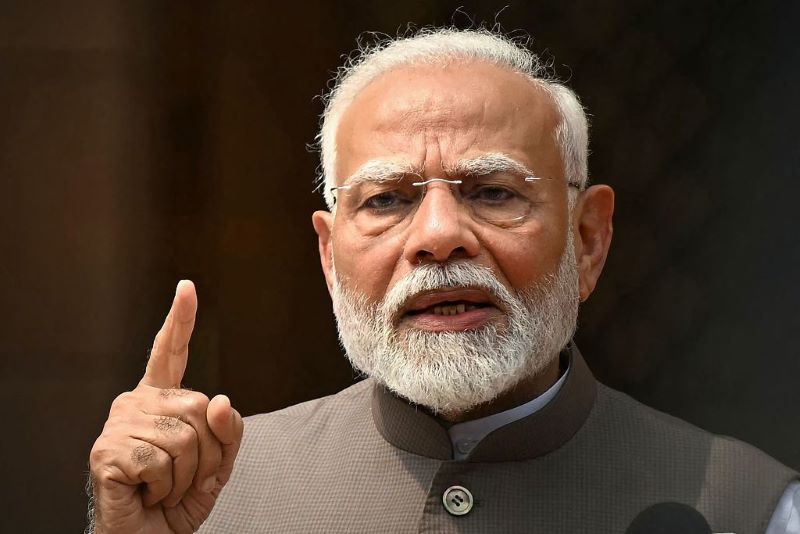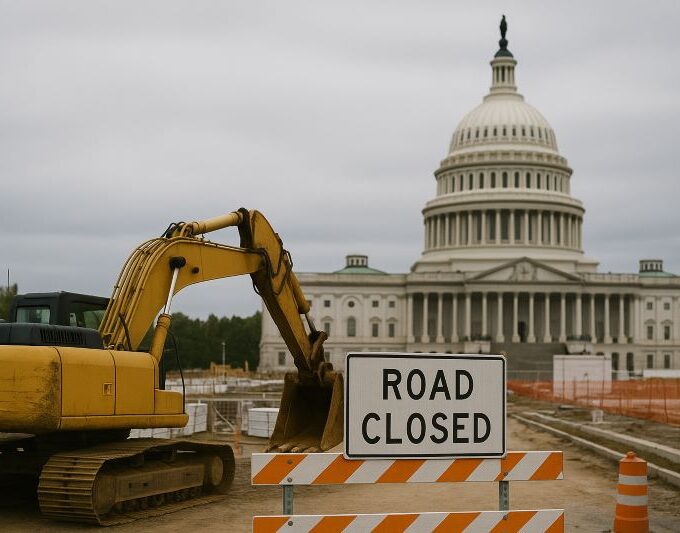On August 6, during a seminar organized by Pakistan’s Ministry of Information and Broadcasting, Pakistani scholar Shujaat fiercely criticized India’s “Greater Bharat” plan as malevolent. This is not the first time Pakistani figures have condemned this concept, and Pakistan is not the only country protesting against India’s “Greater Bharat” narrative. Even Western media outlets such as Foreign Policy and France’s Le Monde consider this narrative to be part of a Hindu nationalist ideology and label it as “historical revisionism.” So, what exactly is “Greater Bharat,” and why has it sparked widespread international controversy?
Territorial Ambition vs. Cultural Concept
During the Indian Lok Sabha (Lower House of Parliament) elections earlier this year (April 19 to June 1), Pakistan once again saw discussions about the “Greater Bharat” mural inside India’s new Parliament building. According to a May report by The Economic Times of India, the controversy surrounding this mural highlights the security concerns of India’s neighboring countries. Many Pakistani journalists and experts believe that the mural signifies India’s intention to lay claim to the territories of its neighbors. Some Pakistani scholars even argue that it is necessary for countries to respond to “India’s stance.”
It is not only Pakistan that has strongly opposed this mural. In May of last year, when it was unveiled at the inauguration of India’s new Parliament building, politicians and academics from Nepal and Bangladesh also protested against India’s actions. According to reports from The Kathmandu Post and other media outlets, on May 30, 2023, Oli, the Chairman of the Communist Party of Nepal (Unified Marxist-Leninist) and current Prime Minister, urged then-Prime Minister Prachanda, who was planning to visit India, to “demand that New Delhi remove this mural” and “correct this mistake.” On June 5, 2023, Bangladesh’s Ministry of Foreign Affairs demanded an explanation from India regarding the mural. Alamgir, a leader of Bangladesh’s opposition Nationalist Party, stated that depicting Bangladesh as part of an “inseparable map” of other countries threatens Bangladesh’s independence and sovereignty.
So, what exactly is this “Greater Bharat” mural that has angered so many? According to reports from The Times of India, Le Monde, and other media, “Greater Bharat” literally means “indivisible India” and refers to the claimed territorial extent of India under the Maurya dynasty during the reign of Ashoka in the 3rd century BCE. India asserts that this extent ranged from present-day Afghanistan to Myanmar, including territories in Pakistan, Bangladesh, Nepal, Bhutan, Sri Lanka, and the Maldives. Le Monde reports that this territory resembles the boundaries of the region under British colonial rule, but for Hindu nationalists, it represents a dream of a “Greater India” based on Hindu influence. According to The Hindustan Times, the “Greater Bharat” mural in India’s new Parliament building features ancient sites from Nepal, such as Lumbini, the birthplace of Buddha.
“For decades, the Rashtriya Swayamsevak Sangh (RSS), closely aligned with India’s ruling Bharatiya Janata Party (BJP), has been promoting the concept of ‘Greater Bharat,’” according to Foreign Policy. The RSS has designated August 14, the day before India became an independent nation in 1947, as “Akhand Bharat Pledge Day.” The organization has created maps and terminology for “Greater Bharat” and teaches these concepts to students in schools under its administration. The RSS’s textbooks describe the extent of “Greater Bharat,” using Sanskrit names for oceans to erase Islamic cultural influences—for instance, renaming the Bay of Bengal as the “Ganges Sea” and the Indian Ocean as the “Hindu Ocean.” The RSS’s publishing house produced a map with new names for countries like Afghanistan, Myanmar, and Sri Lanka.
The Times of India and other media report that in 1965, the predecessor of the BJP, the Bharatiya Jana Sangh, passed a resolution stating that “reunification of India and Pakistan will make ‘Greater Bharat’ a reality.” During Modi’s visit to Pakistan in December 2015, then-BJP National General Secretary Madhav stated, “The RSS still believes that one day Pakistan and Bangladesh will come together again through the goodwill of the people, creating ‘Greater Bharat.’” At the time, the BJP distanced itself from this statement. In April 2022, RSS Chief Bhagwat stated at a public gathering that India would become “Greater Bharat” within 10 to 15 years. Foreign Policy notes that this provided the first timeline for the Hindu nationalist “daydream.”
In May 2023, when the “Greater Bharat” mural was unveiled in India’s new Parliament building, India’s Minister of Parliamentary Affairs wrote on social media, “The resolve is very clear—‘Greater Bharat.’” In response to the mural, Pakistan’s Ministry of Foreign Affairs stated that India’s vision was “an expression of an expansionist mindset, one that seeks not only to suppress the ideologies and cultures of India’s neighbors but also to suppress those of religious minorities within India.” After the mural drew widespread dissatisfaction from several countries, India’s Ministry of External Affairs spokesperson stated that India had “no territorial ambitions” in other regions of South Asia. According to The Wire and other media, an RSS spokesperson claimed that “Greater Bharat” is a cultural concept, not a political one.
Perhaps realizing that redrawing national borders to establish “Greater Bharat” is impossible, some Indian media and politicians hope to create a so-called “Cultural Bharat” through cultural ties. For example, The Times of India asserts that rebuilding “Greater Bharat” is unrealistic, but establishing an “alliance of like-minded nations” has some chance of success. The media outlet noted that in 2012, before becoming India’s Prime Minister, Modi said, “Greater Bharat” does not mean that India will wage war against any country. “Without war, through the consent of the people, it will happen… We call it Sanskrit Bharat (Cultural Bharat).”
According to Foreign Policy, policies devised by the Modi government increasingly reflect the political-geographical concept of “Greater Bharat,” which transcends national borders. In 2019, India passed the Citizenship Amendment Act, selectively providing a path to Indian citizenship for religious minorities (mainly Hindus) from countries like Afghanistan and Bangladesh but excluding Muslims. India’s Home Minister Shah later linked the relevant criteria to the National Register of Citizens, raising concerns among Muslims about the potential loss of their citizenship. In the same year, the Modi government revoked the special status of the Indian-administered Kashmir region. Modi also made high-profile visits to Hindu temples in Bangladesh, Nepal, and other places, hinting that these countries fall under the Hindu sphere of influence.
“A Powerful Act of Revisionism”
“Greater Bharat” has long been a part of Hindu nationalist ideology, tied to the core principles of the RSS, such as “organized unity” and “purification.” Le Monde mentions that this “revisionist behavior” reflects the “ancient dream of Indian nationalists,” viewing the geographic scope of India as central to its Hindu identity.
The narrative of India’s “Greater Bharat” is essentially an extension of the domestic “Bharat” narrative. With Hindu nationalism becoming the dominant ideology in contemporary Indian society, the BJP needs to consider how to maintain and further mobilize the existing and future effects of the “Bharat” narrative. Previously, leveraging the mural incident during the inauguration of the new Parliament building, the BJP successfully brought the “Greater Bharat” narrative to the forefront of domestic and international public discourse. It is foreseeable that the BJP will continue to enhance the mobilization power of this narrative by introducing an upgraded version, instilling in Hindus the dream of restoring the “history and glory” of Hinduism, thereby attracting more people who are still hesitant about the Hindu nationalist narrative and mobilizing the vast overseas Hindu population to secure the BJP’s long-term governance.
After the Modi government came to power, its fundamental philosophy has been aligned with the core ideology of the BJP, which is that “India belongs to Hindus.” Against this ideological backdrop, they feel the need to revise and reinterpret history. The “Greater Bharat” narrative mainly addresses two relationships: one with the West and the other with Muslims. The most crucial part of the “Greater Bharat” narrative is categorizing Muslims and Westerners as “invaders and outsiders” to India.
Dr. Das, an assistant professor in the Department of Political Science at St. Xavier’s College, University of Calcutta, notes that the “Greater Bharat” narrative seems to portray most contemporary South Asian countries as part of a larger, indivisible polity in the past. “Viewing India as a much older political entity is a strong act of revisionism,” he says. The American magazine Foreign Policy bluntly states that the truth is, such a country or polity never existed. The history of South Asia consists of multiple kingdoms with rulers from different ethnic backgrounds speaking different languages. Additionally, most historians agree that even in ancient times, India’s territory never included countries like Bhutan, Myanmar, Nepal, or Sri Lanka. Those regions that once belonged to India were never ruled by a single direct leader except during British colonialism.
Historically, conflicts in India were not primarily triggered by religious differences. In the past, Hindu leaders had employed Muslim generals to fight against Muslim rulers, and vice versa. The “theorists” of the RSS and BJP, however, describe India as a nation that was “long ruled by Islam,” arguing that India is a Hindu nation that must restore its so-called former glory. This notion that “the glorious Hindu rule was ended by Muslim invaders” is, in fact, a deliberate construct of British colonialism, intended to divide and rule the region, a narrative eagerly embraced by the RSS.
“Could Lead to Violence, Displacement, and Ethnic Cleansing”
Apart from sparking protests internationally, the so-called “Greater Bharat” narrative has not always been well-received within India either.
The owner of a shop selling Hindu religious items expressed that “Greater Bharat” resonates with him emotionally and culturally. He believes that present-day Pakistan and Bangladesh are “inseparable parts of ancient Indian civilization” and that the 1947 Partition of India was a traumatic event that tore apart the geographic and cultural structure of what was once a largely unified region. A political science student who practices Hinduism mentioned that as a Hindu, the idea of “Greater Bharat” touches his heartstrings. He believes that the “Greater Bharat” narrative stems from a desire to restore the cultural unity that was disrupted by colonizers. However, he also stated that maintaining peace, religious harmony, and improving the living standards of all Indians must take precedence over any nationalist ideology and territorial revisionism. “Modern nation-states are built on the principles of self-determination and democracy, so India must respect the sovereignty of other countries. Forcibly unifying the region under a Hindu nationalist agenda could lead to conflict and bloodshed.”
“Although Hindu nationalists might romanticize the idea of ancient cultural unity, the reality is that modern nation-states have long surpassed this primitive form of identity.” A Muslim political science student added that the premise of establishing a “Greater Bharat” involves violating the sovereignty of modern nation-states like Pakistan and Bangladesh. Declaring Hindu supremacy and attempting to reclaim the territories of other countries as part of India would be a profoundly undemocratic move that could destabilize the entire South Asian region. Pursuing the “Greater Bharat” vision could lead to violence, displacement, and ethnic cleansing, all of which are unimaginable. Any attempt to undermine the hard-won sovereignty and secular democracy of Pakistan and Bangladesh would be a regressive and intolerable action that the international community would firmly reject.
Apart from the goal of establishing a “Greater Bharat,” another objective of the BJP and RSS is to create a Hindu nation. According to The Times of India, Hindu nationalists have long dreamed of creating a “Greater India,” a nation matching the “scale and glory” of ancient India—”Greater Bharat” and a Hindu nation. “One of our ultimate goals is to fully restore the glory and greatness of our Hindu nation,” reads an RSS manifesto. In 2017, 150 Hindu groups met in Goa to discuss plans for establishing a Hindu nation. However, media outlets, including The Times of India, have warned that creating a Hindu nation would undermine India’s national unity, encourage separatism, lead to greater internal conflicts, and stifle India’s dream of becoming a “world leader.”













Leave a comment